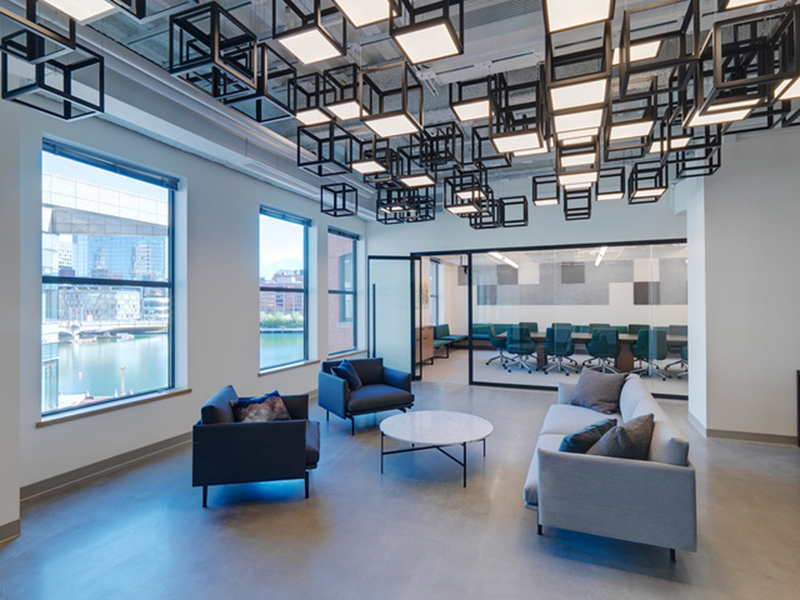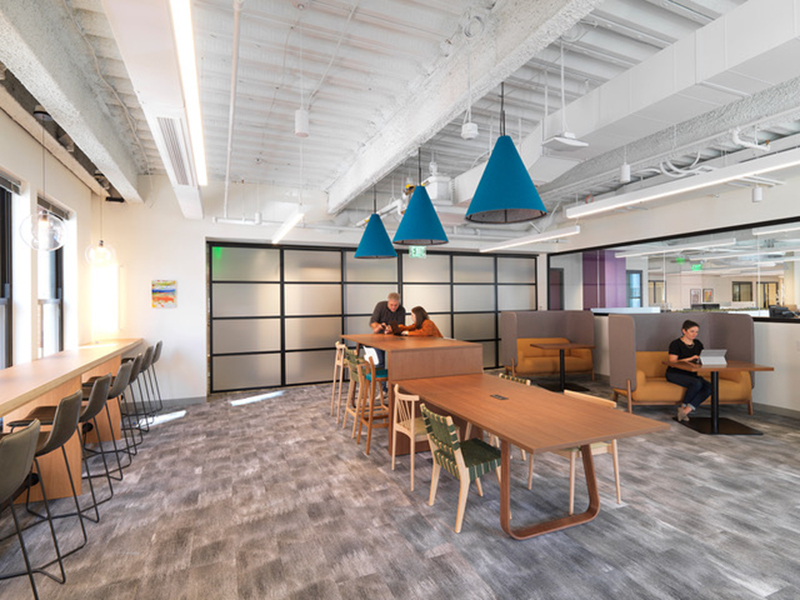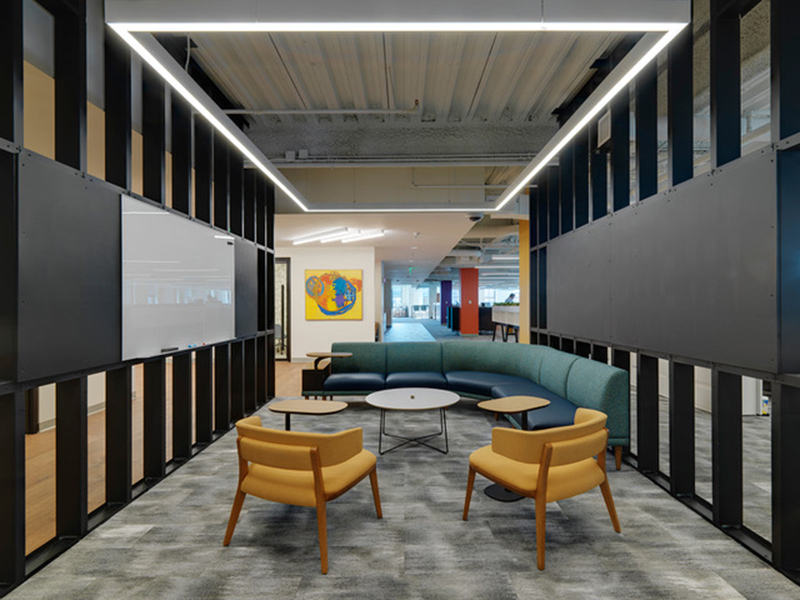
Dyer Brown completes corporate headquarters for Quickbase

Boston, MA Nationally recognized workplace experts Dyer Brown completed the corporate headquarters for growing tech company Quickbase, a platform provider serving the business community. The forward-thinking approach represents one of Dyer Brown’s first major completed workplaces in New England where design work commenced after the pandemic onset, employing an integrated suite of services offered by the architecture and interiors firm including consulting on workplace strategy, change management, furniture selection, and environmental graphics.
The results of Dyer Brown’s close partnership with Quickbase are revealed in a 42,000 s/f headquarters downtown, supported by a 20,000 s/f satellite location in nearby Waltham, Mass.

“Replacing the company’s former home in Cambridge, the split between suburban and urban locations reflects changes in work modes and employee preferences prompted by the pandemic,” said Ashley Dunn, AIA, associate principal and director of workplace. “Dyer Brown designed the workplace to support Quickbase’s need for flexibility and agile workflows, with very few assigned desks yet with an impressive array of amenities and gathering areas to promote collaboration and work innovation.”
With the new headquarters reflecting a major brand overhaul and a significant change for Quickbase’s 300-plus employees and their leadership, the tech company’s decision to opt for Dyer Brown’s suite of integrated services represents a commitment to maximizing return on investment – especially the firm’s capabilities in consulting on workplace strategy and change management.
“Clear internal communications are the linchpin for implementing major changes in workplace strategy,” said Dunn. “Especially for companies over 100 employees in size, it is essential to have a clear organizational strategy for how to prepare staff and management for those big changes. Without that preparation, even well-conceived new workplace approaches can fall short.”
According to Dunn, the integrated design firm Dyer Brown – continuing a 50-year tradition of delivering cutting-edge design innovation and excellence in client service – is well placed to consult on change management communications.
 Rachel Woodhouse, NCIDQ, partner and director of change management for Dyer Brown, agrees: “Collaborating closely with a company we learn how they work, what makes them special, and what employees, managers and human resources professionals will need to know – and when – to have a successful rollout.”
Rachel Woodhouse, NCIDQ, partner and director of change management for Dyer Brown, agrees: “Collaborating closely with a company we learn how they work, what makes them special, and what employees, managers and human resources professionals will need to know – and when – to have a successful rollout.”
As an outside consultant, Dyer Brown’s role is viewed as impartial and objective, leading to a high level of engagement with managers and staff alike, notes Woodhouse.
Quickbase is a clear example of this success, according to Dunn, who led a team to work with both senior leadership and an employee-led design advisory group representing multiple departments. Involved from beginning to end in all the visioning, planning and design phases, the highly collaborative process resulted in the design of a hybrid open-plan approach that organizes the headquarters into “neighborhoods” and limits the number of assigned desks. It also introduces new gathering areas such as a library and two cafes, along with agile workflow-inspired spaces that double as meeting rooms and offices.
Integrated Services, Optimized Results
In their change management capacity, Dyer Brown consulted with Quickbase to select an optimal workplace experience software that would assist employees and their managers with adapting. The company also opted for Dyer Brown’s other integrated service offerings, including environmental graphic design work, furniture strategy and selection, and an overall workplace strategy consultation to optimize the approach for the Quickbase culture and workflow.
“We recognized early on that Dyer Brown’s goal was to foster our growth, productivity, and profitability, rather than to imprint a signature design style,” says Quickbase CFO Steve Webber, who notes that the company considered signing a 75,000 square foot lease before the pandemic prompted them to hold off. “Early In the project, Ashley’s team analyzed survey data and modeled space scenarios, which helped validate our decision to opt for a smaller headquarters plus a suburban location as a response to evolving remote and hybrid work modes. Dyer Brown worked closely with our commercial real estate team to identify the Waltham property, which turned out to be ideal.”
The partnership has produced visible and measurable results. Open-plan areas are conceived to quickly change over to become workstations, to accommodate future growth. Furniture selection efforts support employee wellbeing and agile work modes. The employee design advisory group influenced both aesthetic choices and critical aspects supporting company culture – the introduction of a “quiet neighborhood” organized around the library amenity, for example.
Dunn notes that all of this was accomplished within a fixed budgetary framework, with the project team managing costs by utilizing existing spaces (pantry, server room, file rooms, mother’s room) and avoiding demolition costs where appropriate by retaining ceilings, soffits, and many walls among other architectural elements.